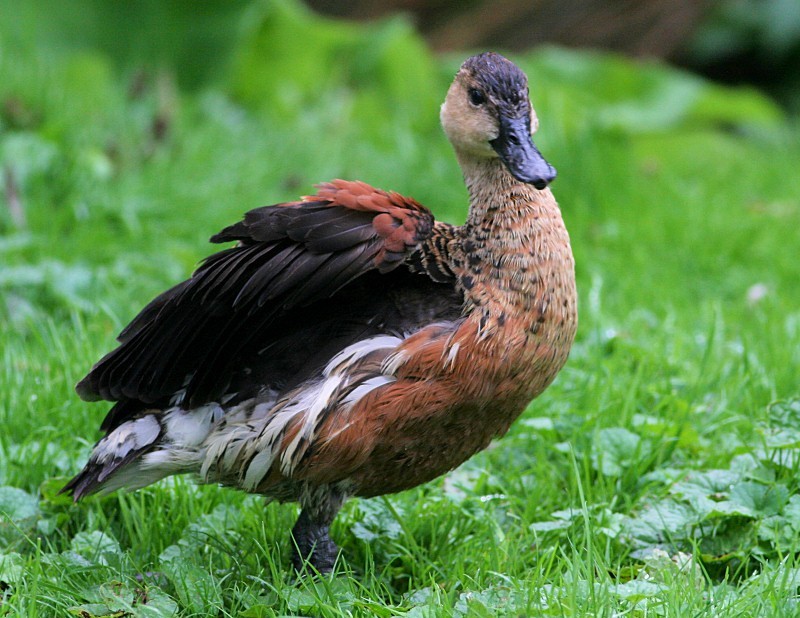
Wandering whistling duck(Dendrocygna arcuata)
Phylum —chordata
Class — aves
Order — anseriformes
Family — anatidae
Genus –dendrocygna
Appearance
The wandering whistling duck has its new name because of their loud whistling calls and the whistling noise their wings make during flight. They have long necks and legs and look like a cross between a goose and a duck. They have a strong head and neck with a darker crown and hindneck. The breast contains black spotting and the feathers are mostly dark brown. They range in size from 54–60 cm in height and weigh on average 750 grams.
Habitat
The wandering whistling duck is found in northern and eastern Australia, from the Kimberley region, across the north of Australia, to south-eastern New South Wales. It is vagrant to the south-east and the south-west of the country. This species is also distributed through Indonesia, Papua New Guinea, the Philippines and the Pacific Islands.
Diet
The wandering whistling duck feeds almost entirely on aquatic vegetation and seeds, but also on young grass, the bulbs of rushes and other herbage, insects and other small aquatic animals. Wandering whistling ducks forage in tight flocks, with the birds in front diving, and those behind flying over them.
Reproduction
Wandering whistling ducks are monogamous, and pair-bonds are most likely life-long.
Breeding occurs during the tropical wet season usually between December and May. During this time six to fifteen eggs are laid in a nest not far from water and usually in high grass or a sheltered area.
In captivity
Lifespan can reach 20 years.
Wandering whistling ducks can be bred either in paddocks or in a park with a large artificial reservoir. A small pond with a depth of at least one meter with abundant water and coastal vegetation is suitable for keeping.
Wandering whistling ducks form flocks any time except of the breeding season, so these birds need spacious rooms to keep them, but this species behaves aggressively towards other ducks. Therefore, when keeping several types of ducks, you need to create shelters where the birds can hide themselves and feel safe.
This species of duck is particularly sensitive to frost and should not be left to spend the night in winter on bare ground, as duck feet are prone to frostbite. In this case, be sure to put a pile of straw. They must also move freely in aviaries and have an opportunity to fly. Birds sometimes have their wings cut off, but then keepers set up large-diameter perches at the proper height so that the birds, despite the shortened wings, can sit on the perches.
Feed the birds with mixed feed and grain, which is given to domestic chickens. During the breeding season, protein nutrition is enhanced.
Artificially fed ducklings should be kept separate from other birds, as other birds may terrorize them and make them go away from food. Strong chicks repel weak ones, so small ducklings need to be fed separately. With a balanced diet, ducklings grow quickly and gain weight.
Wandering whistling ducks can produce hybrids with other species, so it is better to keep them in a separate enclosure to get purebred offspring. Bird trapping is stressful time for these ducks, so they should not be disturbed for no particular reason.
 Russian
Russian
 English
English
























